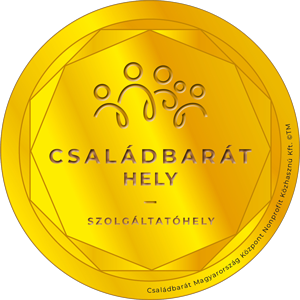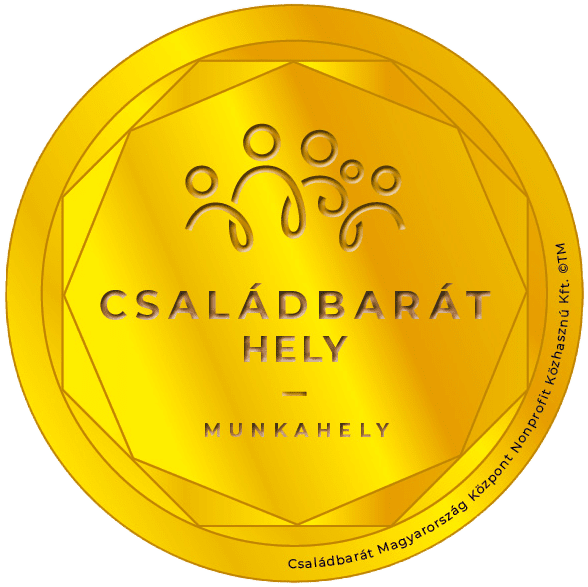Várgesztes
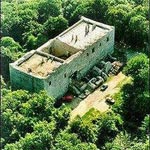
Várgesztes is approximetly 70 kilometers from Budapest.
Castle of Várgesztes was first mentioned in written sources in 1332, among its 14th century names was Geztes, Keztus, Gestus, Kerthes, Gertus, Gerdhes.
Building of the villlage together with the castle above it was started by the Csák Clan. According to the contemporary sources the castle was already standing in the time of King Zsigmond. The Turks invaded the castle several times but could only defeat it in 1541. Not only the castle but also the village got demolished.
In 1693 Count Ferenc Esterházy obtains the castle along with its surrounding estate.
Around 1730 Count József Esterházy inhabited the village with Danube-side Catholic Germans. At that time the village was called „Pusztagesztes”, „vár” was only added to„Gesztes” (Várgesztes) in 1917.
Sights: in the cemter of the village we can find a Roman Catholic church-its church–bell was renovated with the contribution of the Villapark. A new Village Hall stands near the church, which has a sports hall, conference rooms, a school and a nursery inside. Population of Várgesztes is about 550,- mainly German nationality inhabitatants who like to keep their traditions. Signs show the way to the Castle which is now operates as a view tower and a guest house.
Tata
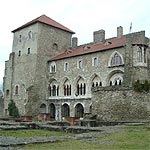
During the time of the Árpád Dynasty Tata had been a royal estate. Settlement’s name was first mentoned as „Tata” in 1221. From the 13 th century to 1326 it belonged to the castler builder family Csák. From 1410 Castle of Tata is a favored place of King Zsigmond (1387-1437). Castle’s slow decay was stopped by King Mátyás (1458-1490) who had later turned it into a late Gothic style residency. From 1472 Mátyás came here for hunting once every year. In 1510, due to the plague under the kingdom of II. Ulászló parliaments were held in Tata, on the square (Parliament square now) in front of the Franciscan Monastery.
Town Tata was occupied by the Turks in 1543. Reconstruction of the Castle (and the towers seen today) was carried out based on the plans of Orbán Süess between 1568-1577. In 1727 Tata and the surounding villages were bought by Count József Esterházy (owner of the village and castle of Gesztes). Work of famous architects -Jakab Fellner, József Éder, József Grossmann, Antal Schweiger- he had invited to the town is still preserved on Tata’s buildings.
After the 1809 defeat by the French at Győr, Hungarian king I. Ferenc (1792-1835) moved with his court to Tata and spent 2 months in the earl’s castle, where on 14th October 1809 Peace of Schönbrunn was signed by him.
In the past few decades Tata, the „town of waters” has become well-known not only for its waters, English garden, shady parks, reconstructed buildings, tidy roads and olimpic Training Camp, but also for its museums and traditional yearly festivals (Water, music, flower Festival, Tata get-together, Baroque Festival, Outdoor Theatre, Fall fishing festival).
Sights:
- Tata’s symbol, the Castle stands on the bank of the Old lake, together with the Esterházy mansion and the former Piarist monastery and grammar school. From the buildings of the Kossuth square arises the monumental Roman Catholic parish church built upon the plans of Jakab Fellner. Parliament square has a Belfry and a Capuchin church.
- At Cseke-lake we find the English garden with botanical oddities, the Eszterházy garden house and artificial ruins- out of which the most valuable ones are the ruins of the Vértesszentkereszt church and the renewed Palmhouse. Both lakes have several pleasant cafés and restaurants open for guests each day of the week.
- Agostany arboretum: we can admire the diversity of nature: the evergreens, the cheerful patches, foliages and shrubs. This arboretum is a gem of the Gerecse landscape, which is definitely a worth to walk.
- Agostany Eco-Village: visit and experience the environmental awareness: medieval village reconstruction, organic farming, guided tours, 15th century inn atmosphere, presentation of native animals. Registration is required
Tatabánya
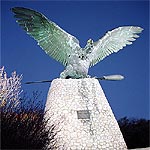
Tatabánya lies at the foot of the a Kő-mountain, in a valley embraced by mountains Gerecse and Vértes. Number of inhabitants is 75 thousand. City of Tatabánya was established on 10th October 1947 by uniting Alsógalla, Felsőgalla, Bánhida and Tatabánya (village).
Due to its favourable location this area has been inhabited since the paleolithic times. Untill the System Change Tatabánya used to be a typical mining/ industrial town, since then new forms of industry have developed. Tatabánya is one of country’s more dinamically developing cities.
- City’s symbol the Turul –bird is there to remind us of the legend about how Árpád’s conquering army defeated Szvatopluk Moravian king on the Bánhida plains.
- Selim cave can be found approx. 200 meters from the monument. It got its name after Sultan Selim who-according to the legend-killed here the people of 7 villages with the smoke of the fire he made at the entrance of the cave. Archeology couldn’t prove any of this, neverthless they did explore remainings of prehistoric fireplace, charred pieces of wood and animal bones.
- Hungary’s first open-air Miners and Industraial Museum: The museum is one of the most interesting attraction on the site of the original mine. In the area we can see many mining quarrying machines and trasport vehicles. We can also see the original shaft tower with a machine house.
Vértesszőlős
Ancient settlement: The oldest of Hungary, as a 400.000 year old archaeological site, was discovered in a tombstone of Vértesszőlős.
Komárom
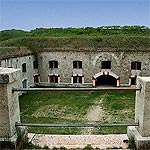
Komárom is a half-hour drive from Várgesztes. Town was first mentioned in a document in 1037 by the name of Camarin. Komárom’s most significant tourist attraction is the fortress built between 1809-1877. Its main section is the Monostor-fort in the Western part of the town. Interesting thing about it is that it cannot be seen from the outside at all. At the horseshoe shaped gunner’s bastion plays are performed nowadays. Fortress provides room for an exhibition called „castles, forts, soldiers- Komárom’s martial life from the 15th century untill 1991”. Komárom’s oldest fort is Fort-Csillag. They built wide drains around it. Igmánd-fort, protecting the town from South is smaller than the others, from 1966 a Roman Lapidarium can be seen in the György Klapka Museum operating here. History, World War I in particular, had interrupted the development of the town. Due to the Treaty of Trianon town’s part lying ont he left side of the Danube became the part of Chechoslovakia (Slovak republic today) by the name of Komarno.
- Thermal spa: thermal water can be found for nearly 50 years. You can find indoor and outdoor pools and different type of saunas.
Majk
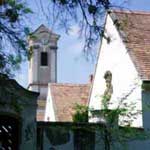
From the Villapark of Várgesztes, Majpuszta (Plain of Majk) lies 12 km by car and 4,5 km on foot. Here at the Lake of Majk we find Europe’s single Camaldulian hermitage that could remain intact.
Resort was donated to the order by Count József Esterházy in 1733. Constructions began based on the plans of Franz Anton Pilgram. The church and the „U” shaped main building is surrounded by 20 baroque cell-houses.
Monks living hear took a vow of silence which could be suspended twice a year: at Christmas and at the visit of their families. They lived according to a strict daily routine: day began with a mass before sunrise, after they spent their time praying and studying academic sciences. To keep fit they worked in the garden or occupied themselves with woodcarving and goldsmithing.
Order was dismissed in 1782 by II. József due to the lack of charity activities. Buildings were to face years of devastation untill they became Eszterházy property once again. Móric Eszterházy had the Main building turned into a hunting mansion with an English park around it. Today cell-houses, the mansion’s refectory and the church tower can be visited.
Esztergom

Esztergom is one of the most historic towns in Hungary. Throughout the rich history of our town, times of bright kings, significant events, rich palaces and churches were followed by the massacre of vicious battles, the raids of Tatar and Turkish hords – devastation, followed by reconstruction.
The history of the town accumulates the history of the whole country.
- Esztergom Basilica:It is built in a classicist and ancient Egyptain style by the Cathedral of Esztergom-Budapest. It is one of Hungary's largest church buildings.
- Esztergom Castle Museum: it presents the remaining places of the royal palace, in the palace rooms the history of the Castle of Esztergom can be seen.
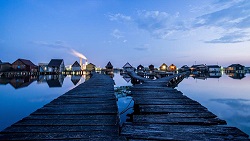 Bokod
Bokod
A town near Oroszlány. The floating village: The Vértes power plant's artificial pond is almost completly occupied by the special piles built on spiles wih a long wooden pier.
Neszmély
Steamboats are lined up in the calm waters of St Ilona Bay and enchanting natural surroundings abd provide an unrivaled relaxation for the whole family.
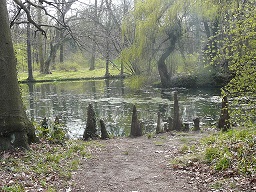 Alcsút
Alcsút
Alcsut arboretum: it is one of the country's most original and oldest English style gardens, with almost 40 hectares of nature conservation area. One of Hungary's most valuable living tree collections are here. The arboretum is the park of the former Habsburg castle. Castle of Alcsut: The castle is located at the eastern foot of the Vértes in the valley of Váli-water.
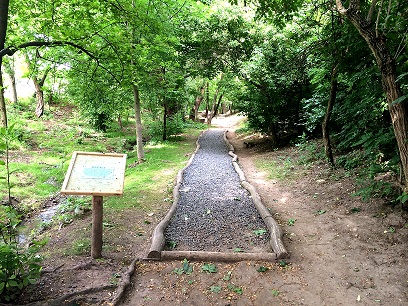 Tabajd
Tabajd
Barefoot park: In the park you can walk barefoot in the summer among the trees with a pleasant shadow near a stream. Great view of the Vértes or you can see a few moments from the life of the little village. We can try 21 types of walking surfaces. At one stage, a rough basalt stones are challenging and elsewhere we can leave our footprints in the peat or if we like we can go into the stream.


